Executive summary
The tables and figures in this section summarize our key findings. The recommendations for induction based on this data can be found under the web-site heading “P.I.T. instructional.” P.I.T. instructional consists of a PDF that outlines our suggestions for a successful induction and a series of videos that details the practical techniques.
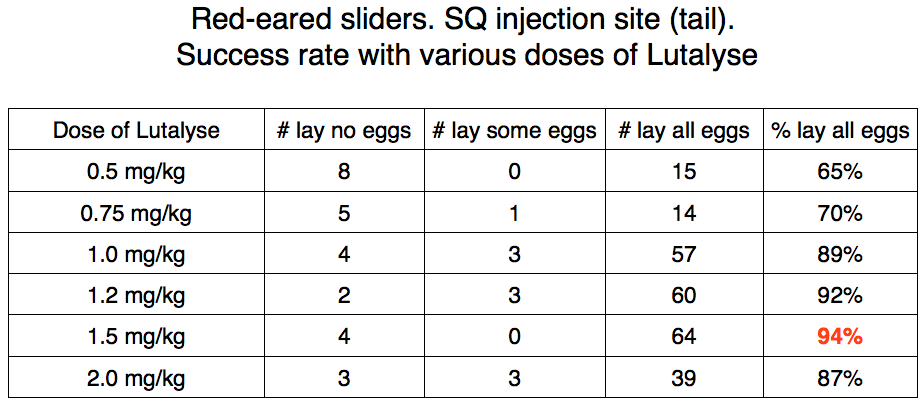
Large numbers of red-eared sliders (RES) were involved in multiple trials over several years to determine the most effective dose of Lutalyse in healthy RES. The most effective dose was 1.5 mg/kg given subcutaneously.
———————————————-
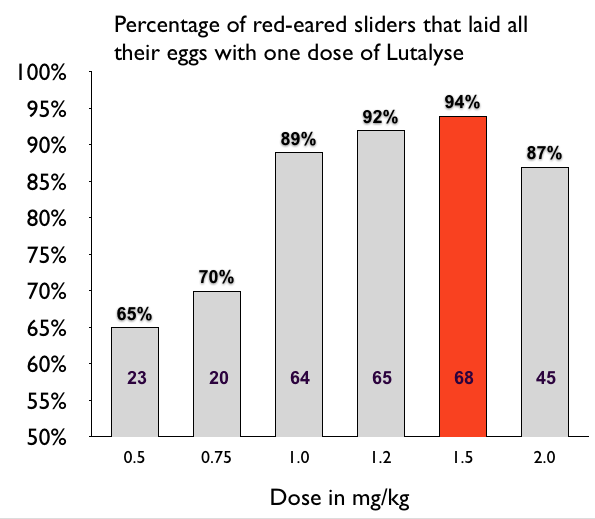
The figure above is a graphical representation of the relative effectiveness of various doses of subcutaneous Lutalyse used to induce oviposition.
———————————————–
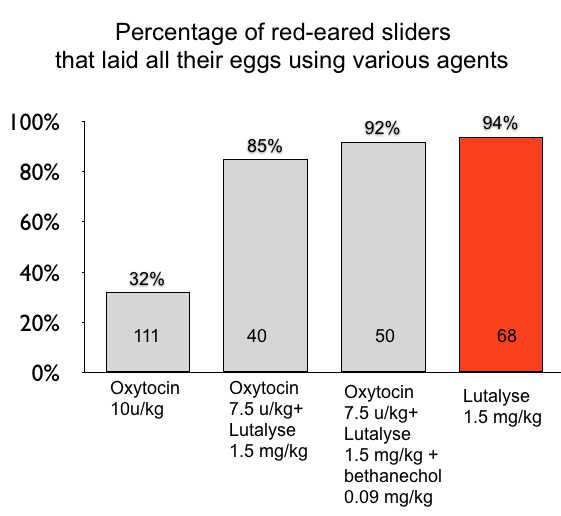
This figure illustrates the dramatic improvement of effectiveness when Lutalyse is used when compared to oxytocin alone. Large numbers of RES were involved in these trials which were done over several years. Note the slight improvement when Lutalyse is used alone compared to various combinations.
—————————————————
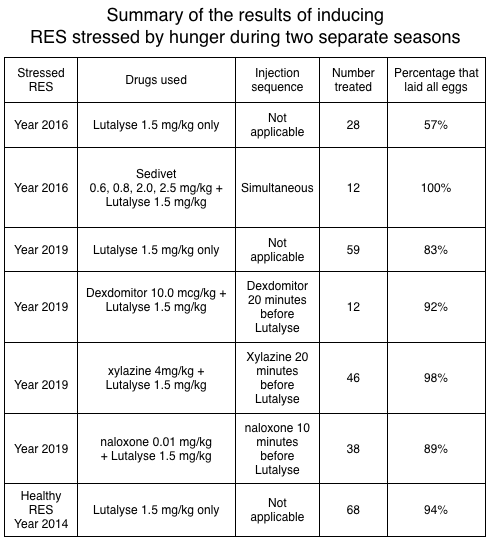
Smaller numbers of RES were involved in this trial to determine the best induction method for RES stressed by underfeeding. Sedivet 0.8 mg/kg followed immediately by Lutalyse 1.5 mg/kg was the most effective treatment.
———————————————————–
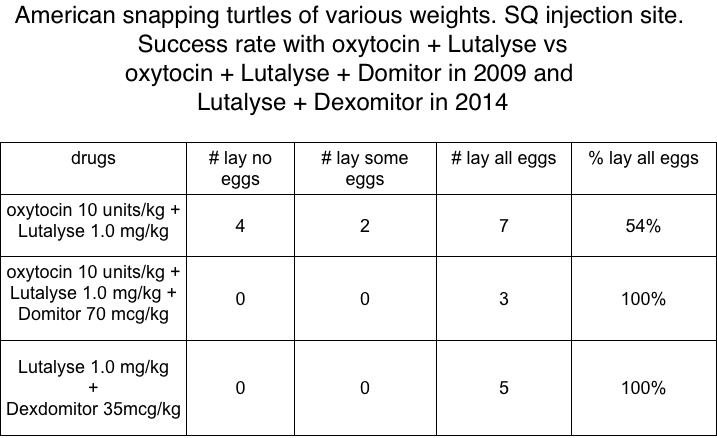
As you can see in the table above, very small numbers of snapping turtles were involved in this trial. It is included in the executive summary because it highlights the striking increase of effectiveness for some species when an alpha-adrenergic agent is administered with Lutalyse.
——————————————————–
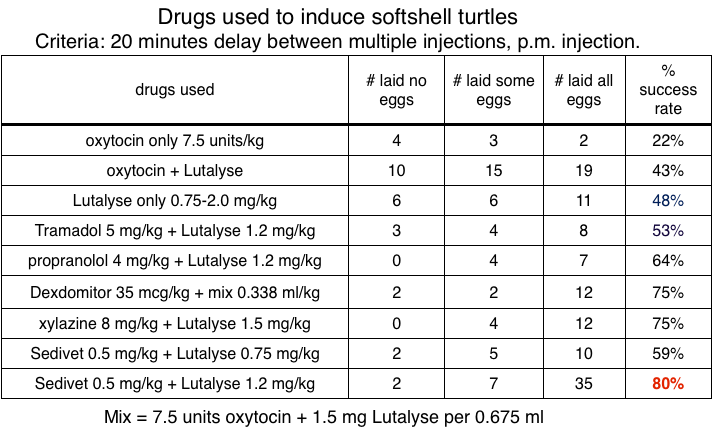
Moderate numbers of spiny softshell turtles were involved in this trial done over several years. The most effective method to induce oviposition was intramuscular Sedivet 0.5 mg/kg followed 20 minutes later by subcutaneous Lutalyse 1.2 mg/kg.
